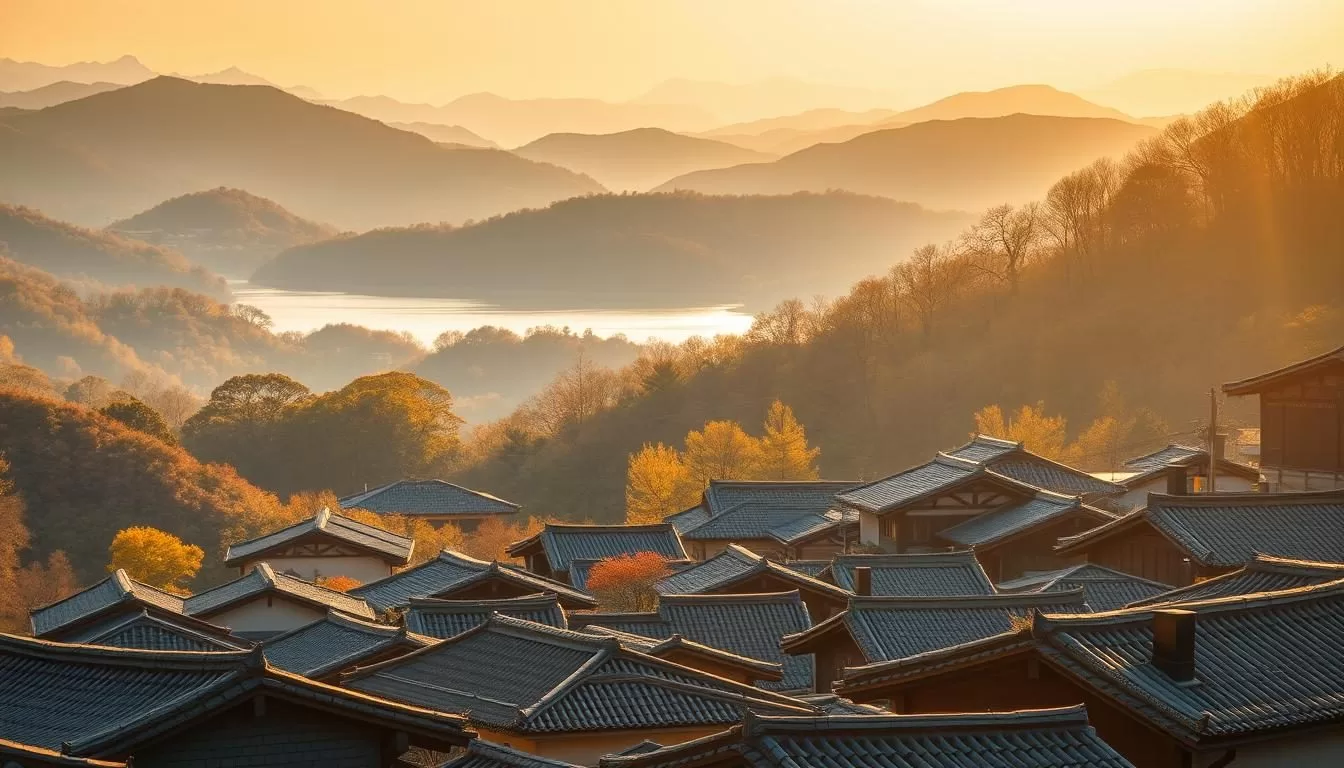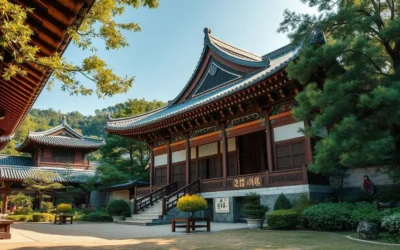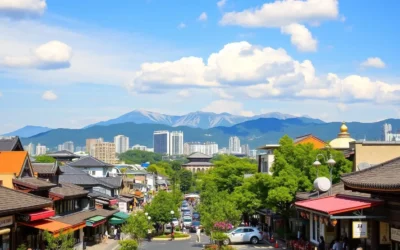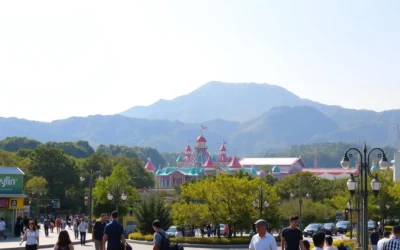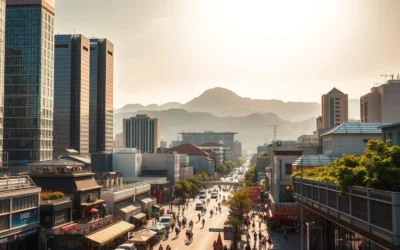✓ Accommodations✓ Flights✓ Rental Cars
Imagine a place where traditional Korean culture thrives, untouched by the crowds of tourists. North Jeolla Province is one such destination that offers a unique blend of natural beauty and rich cultural heritage.
This region is characterized by its rugged coastlines, lush green landscapes, and delectable local cuisine, making it an ideal spot for travelers seeking an authentic experience.
As you explore this enchanting region, you’ll uncover the essence of Korea’s history, culture, and natural splendor. From historical sites to outdoor adventures, South Korea has much to offer in this often-overlooked province.
Discovering North Jeolla Province: Korea’s Hidden Gem
North Jeolla Province, the cradle of the Joseon dynasty, remains a hidden gem, preserving the essence of Korea’s past. This region has been able to maintain its authentic character due to being historically overlooked in favor of more popular destinations like Seoul.
Where is North Jeolla Province Located?
North Jeolla Province is situated in the southwestern part of Korea. It is a region that boasts diverse landscapes, from mountains to plains, making it a destination that caters to various interests. As you travel through this province, you’ll discover its unique charm.
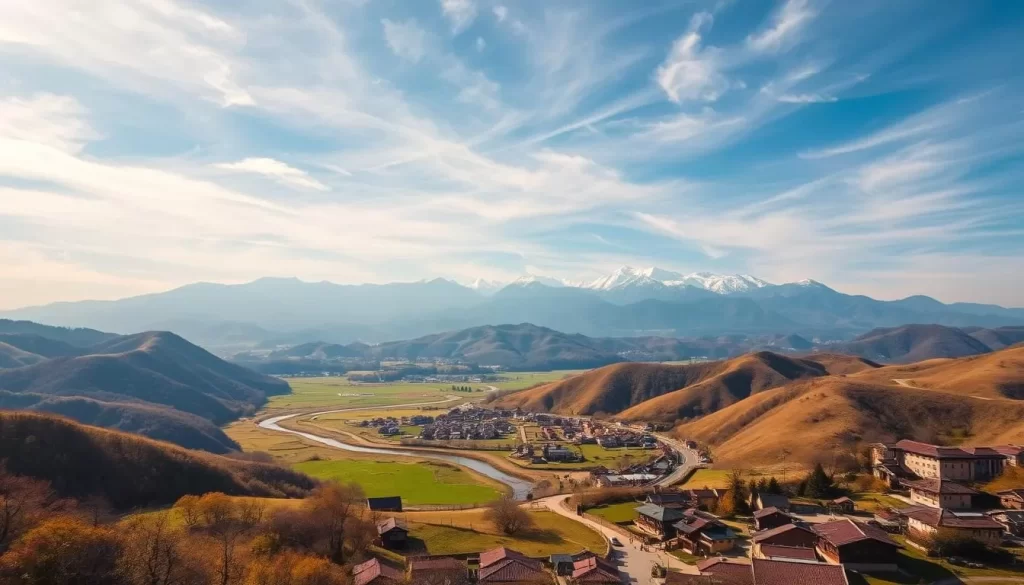
Why Visit This Undiscovered Region
North Jeolla Province offers a plethora of experiences that make it an ideal destination for nature lovers and culture enthusiasts alike. Here are some compelling reasons to visit:
- Experience authentic Korea away from the crowds that flock to more popular destinations.
- Marvel at the region’s beauty, including national parks and scenic countryside.
- Explore a rich cultural heritage, from traditional villages to historical sites.
- Savor the local cuisine, particularly in Jeonju, known as Korea’s food capital.
- Engage with traditional Korean arts and performances preserved through generations.
As visitors explore North Jeolla Province, they will uncover the layers of history, culture, and natural beauty that make this region a truly unique destination.
Jeonju: The Cultural Heart of North Jeolla
As the cultural heart of North Jeolla, Jeonju offers a rich tapestry of traditional Korean experiences. You can immerse yourself in the city’s historic charm, explore its vibrant cultural scene, and enjoy its renowned culinary delights.
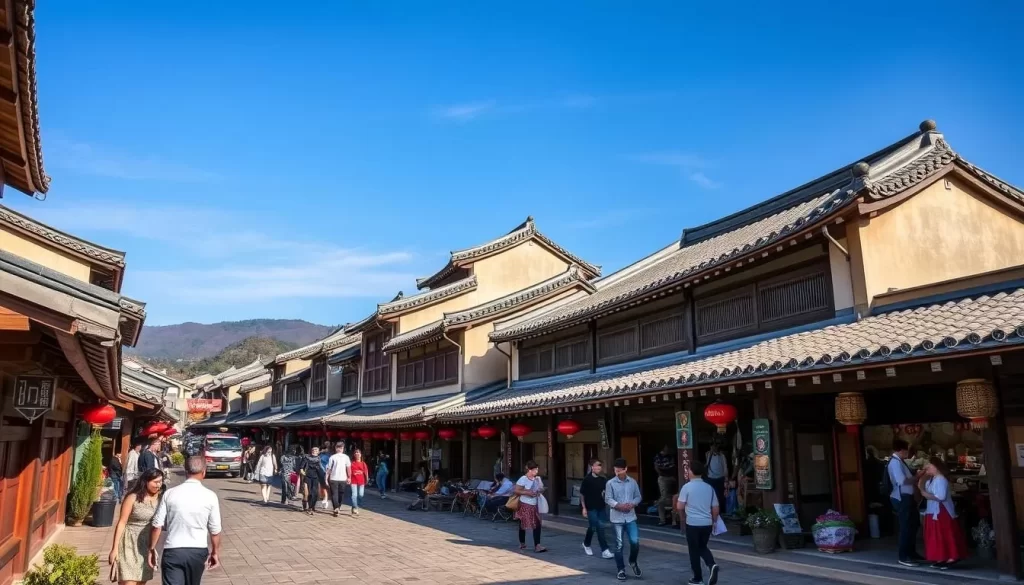
Exploring the Famous Hanok Village
Jeonju’s Hanok Village is a must-visit attraction that embodies the traditional Korean way of life. As you wander through the village, you’ll be surrounded by beautifully preserved hanok houses, some of which date back centuries.
The village is not just a collection of old houses; it’s a living, breathing cultural hub where you can experience traditional Korean culture firsthand. You can explore the narrow alleys, visit museums, and enjoy the local cuisine.
Traditional Arts and Crafts Experiences
Jeonju is renowned for its traditional arts and crafts, and you can engage with these through various workshops and performances. The Traditional Craftworks Exhibition Hall is a great place to start, where you can see artisans at work creating traditional Korean crafts like hanji (traditional paper) and hanbok (traditional clothing).
You can also participate in pansori shows, a traditional Korean musical storytelling art form that originated in the Jeolla region. These experiences not only provide a deep insight into Korean culture but also make for memorable souvenirs.
By visiting Jeonju’s hanok village, you’ll gain a unique experience of traditional Korean culture, making your trip to North Jeolla Province truly unforgettable.
Culinary Delights: North Jeolla’s Famous Food Scene
North Jeolla Province is a culinary haven, offering a diverse range of local specialties that showcase the region’s rich gastronomic heritage. The province’s cuisine is characterized by its emphasis on fresh ingredients, traditional recipes, and meticulous preparation. You can experience the authentic flavors of Korean cuisine in various restaurants throughout the region.
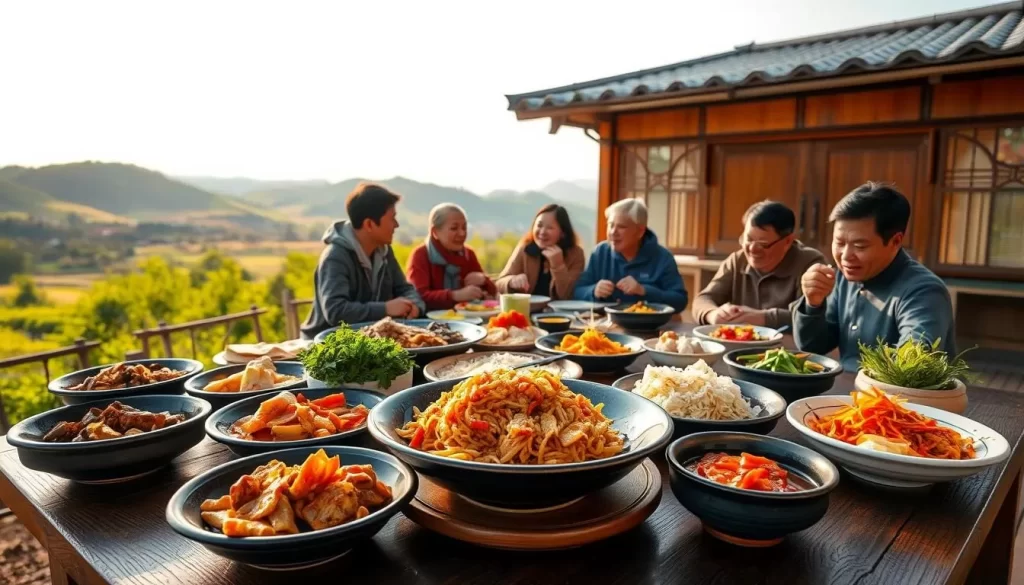
Jeonju Bibimbap: The Signature Dish
Jeonju bibimbap is a signature dish of North Jeolla Province, and it’s a must-try when visiting the region. This iconic rice bowl dish is topped with an assortment of vegetables, meat (usually beef), and a fried egg, all mixed together with a spicy chili pepper paste. The Jeonju version is particularly famous for its high-quality ingredients and careful preparation.
The bibimbap is often served with a variety of dishes, including kimchi (spicy fermented Korean cabbage) and other side dishes, known as banchan. The combination of flavors and textures in Jeonju bibimbap is a true representation of the region’s culinary expertise.
Other Must-Try Local Specialties
Beyond bibimbap, North Jeolla Province offers a treasure trove of culinary specialties. You should try Jeonju’s famous kongnamul gukbap (bean sprout soup with rice), which locals swear by as the perfect hangover cure. Another local favorite is makgeolli (rice wine), often served in traditional brass bowls alongside pajeon (green onion pancakes).
The region is also renowned for its banchan, which are more numerous and meticulously prepared here than anywhere else in Korea. You can sample Jeonju’s royal court cuisine at restaurants that specialize in hanjeongsik (traditional Korean full-course meals), featuring dozens of beautifully presented small dishes. For dessert, try Jeonju’s famous chocopie or visit a traditional tea house for persimmon punch and rice cake desserts.
Maisan Provincial Park: The Horse-Ear Mountains
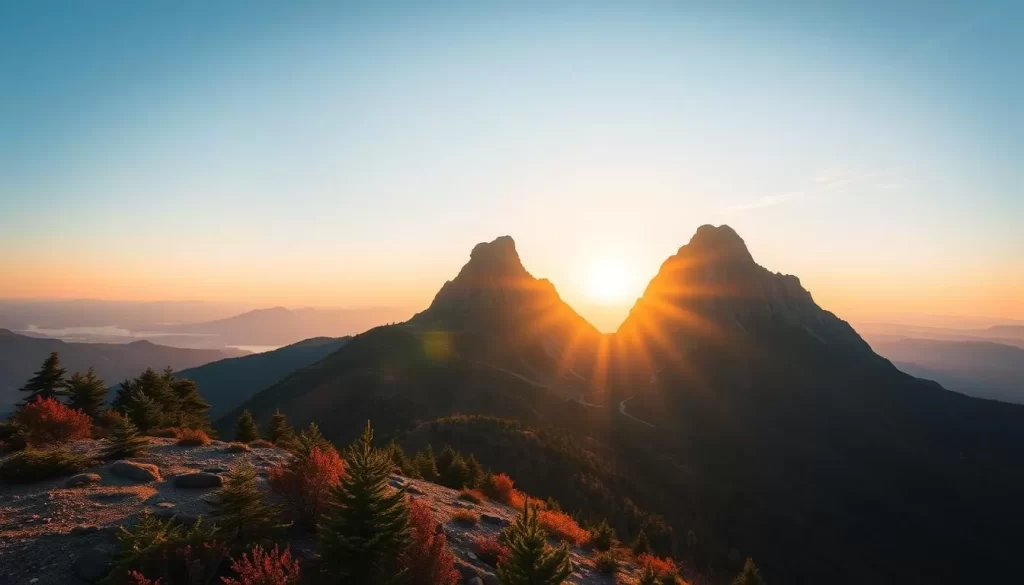
Maisan Provincial Park, known for its distinctive twin peaks, is a must-visit destination for nature lovers and photography enthusiasts. The park offers a unique blend of natural beauty and cultural significance, making it an unforgettable experience.
Hiking Between the Twin Peaks
The park’s main attraction is the trail that connects the twin peaks, offering hikers a chance to explore the scenic path and enjoy breathtaking views. Although the peaks were closed for regeneration at the time of writing, the trail remains a highlight for visitors, providing a glimpse into the park’s natural wonders.
Despite restrictions on climbing the peaks, the trail between them remains accessible, allowing visitors to appreciate the unique landscape. However, it’s worth noting that some visitors still attempt to climb the peaks, disregarding the rules and potential fines.
Best Viewpoints and Photography Spots
The park is dotted with several viewpoints that offer stunning views of the surrounding countryside. Some of the top photography spots include:
- Cheonhwangbong, the saddle point between the twin peaks, where you can capture both “horse ears” in a single frame.
- The Ssangyonggul Cave area, which offers unique perspectives framed by ancient pine trees and traditional Korean pavilions.
- The Maisan Observatory near the northern entrance, providing stunning vistas of the countryside.
For photography enthusiasts, visiting during early morning or late afternoon is recommended, as the lighting creates dramatic shadows and illuminates the landscape with a golden glow. During spring, the viewpoint near Tapsa Temple offers breathtaking scenes of cherry blossoms framing the mountain silhouettes.
Tapsa Temple: A Marvel of Stone Pagodas
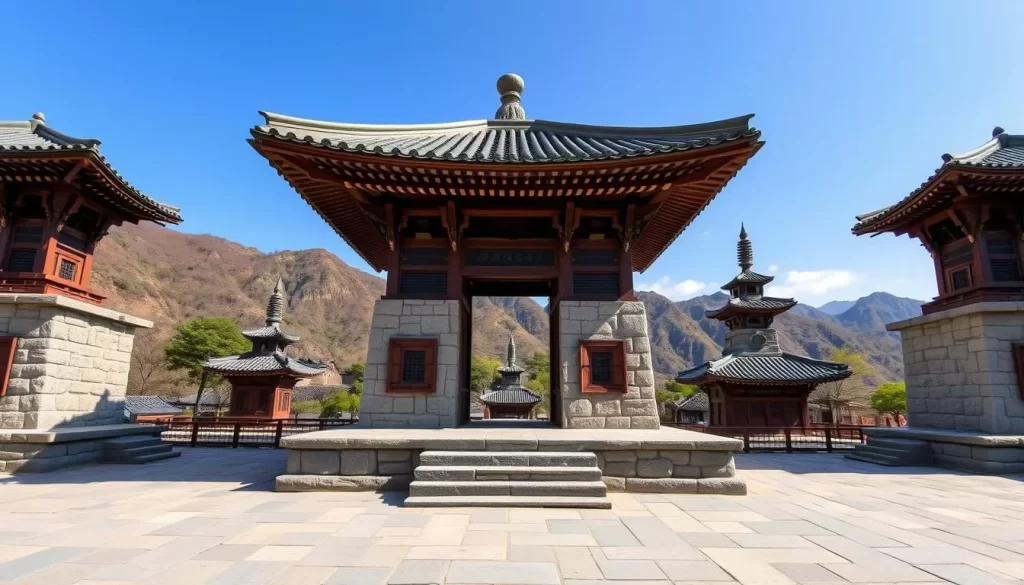
Tapsa Temple, located in the picturesque Maisan Provincial Park, is a breathtaking example of Buddhist devotion and architectural ingenuity. This temple is renowned for its nearly 100 stone pagodas, constructed without the use of adhesives, showcasing the remarkable skill of its builder, monk Yi Kap-myong.
The Story Behind the Stone Towers
The story of Tapsa Temple is deeply intertwined with the dedication and craftsmanship of its founder. Monk Yi Kap-myong spent decades constructing the stone towers, some standing over 10 meters tall, as a testament to his faith. This unique architectural achievement not only reflects the monk’s perseverance but also contributes to the temple’s spiritual ambiance.
Visiting Tips and Spiritual Experience
For visitors seeking a serene and enlightening experience, Tapsa Temple is best visited on weekday mornings to avoid crowds. As you walk along the path through the temple grounds, you can participate in meditation sessions and tea ceremonies, deepening your connection to this sacred site. Remember to respect the temple’s active worship status by maintaining a respectful demeanor during your visit.
By planning your visit according to the tips provided, you can fully appreciate the beauty and spirituality of Tapsa Temple, making your trip a memorable one.
Deogyusan National Park: Nature at Its Finest
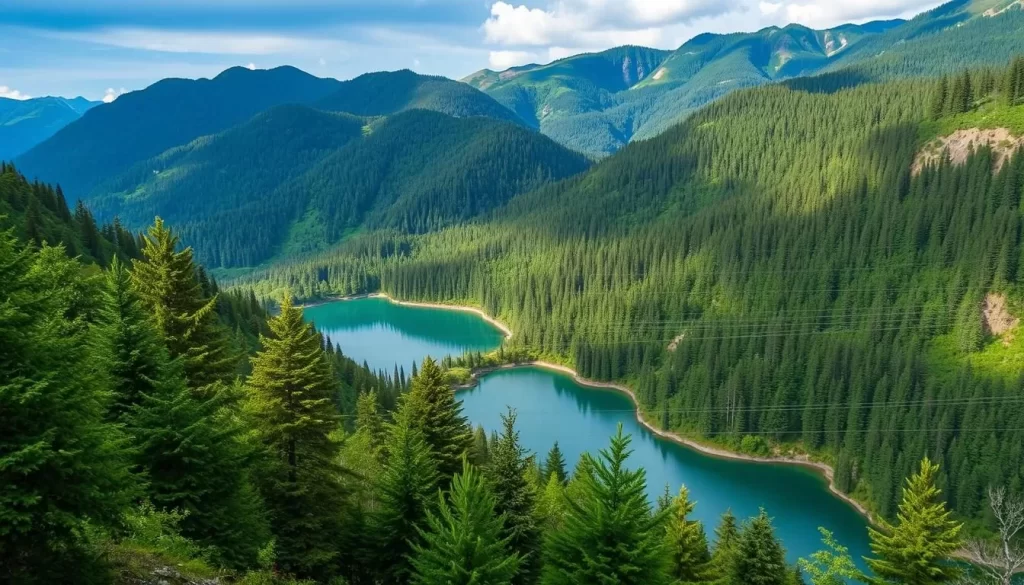
As you venture into Deogyusan National Park, you’ll discover a world of natural beauty and exciting activities. This stunning national park is a haven for outdoor enthusiasts, offering a diverse range of experiences across different seasons.
Seasonal Highlights and Trails
Deogyusan National Park is a year-round destination, with each season bringing its unique charm. In the spring, the park is adorned with vibrant flowers, while autumn brings the spectacle of changing foliage. The park’s trails cater to hikers of all levels, from leisurely strolls to more challenging routes.
The trails offer breathtaking views of the surrounding landscape, making every step a rewarding experience. Whether you’re hiking in the spring or enjoying the fall colors, Deogyusan National Park is a treat for nature lovers.
Muju Ski Resort: Winter Activities
In the winter, Deogyusan National Park transforms into a snow-covered paradise, thanks to the Muju Ski Resort. With 30 slopes catering to all skill levels, it’s an ideal destination for skiers and snowboarders. The resort boasts a 6.1km course, offering breathtaking views as you descend through pristine powder snow.
Beyond skiing, visitors can enjoy a variety of winter activities, including snow sledding, snow tubing, and snowmobile rides. Even non-skiers will find plenty to enjoy, with the resort’s Tirol Village offering European-inspired architecture, restaurants, and relaxing hot springs.
Traditional Cultural Experiences in North Jeolla Province
North Jeolla Province offers a plethora of traditional cultural experiences that allow visitors to immerse themselves in Korea’s rich heritage. You can engage in various activities that showcase the region’s cultural depth, particularly in Jeonju’s Hanok Village.
Pansori Performances: Korean Traditional Music
You can enjoy Pansori performances, a form of Korean traditional music that is both captivating and emotionally resonant. These musical events are frequent, offering a unique insight into Korea’s cultural traditions. You may even have the opportunity to participate in traditional activities such as lantern-making or calligraphy, enhancing your cultural experience.
Hands-on Cultural Workshops
In Jeonju’s Hanok Village, you can participate in hands-on cultural workshops that teach traditional Korean crafts. You’ll have the chance to learn hanji (traditional Korean paper) making, where instructors guide you through creating delicate yet strong paper from mulberry bark. Additionally, traditional natural dyeing workshops allow you to create your own naturally colored fabrics using local plants, flowers, and minerals, resulting in beautiful souvenirs. You can also engage in traditional food-making classes and hanbok (traditional Korean clothing) experiences, further enriching your cultural experience in this historic village.
Best Day Trips from Jeonju
Day trips from Jeonju offer a chance to experience the diverse beauty of North Jeolla Province. With its central location, Jeonju serves as an ideal base for exploring the surrounding region.
Boseong Green Tea Plantations
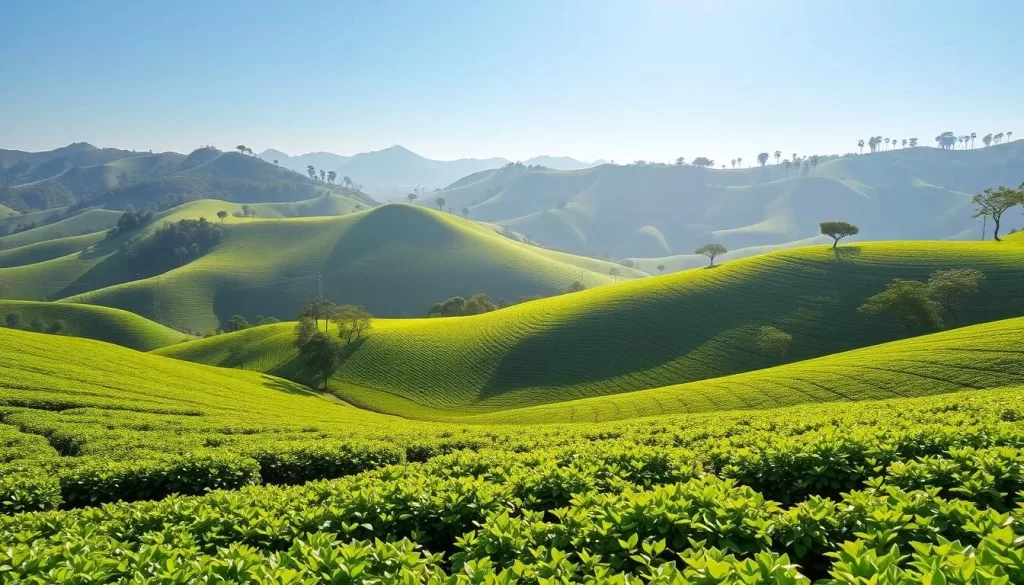
Boseong is renowned for its green tea plantations, which provide a serene and picturesque landscape. Visitors can stroll through the tea fields, learn about the tea-making process, and enjoy the local tea culture.
The tea plantations are particularly beautiful during the spring and summer months when the tea leaves are lush and green. It’s an ideal destination for those looking to escape the hustle and bustle of city life.
Naejangsan National Park in Autumn
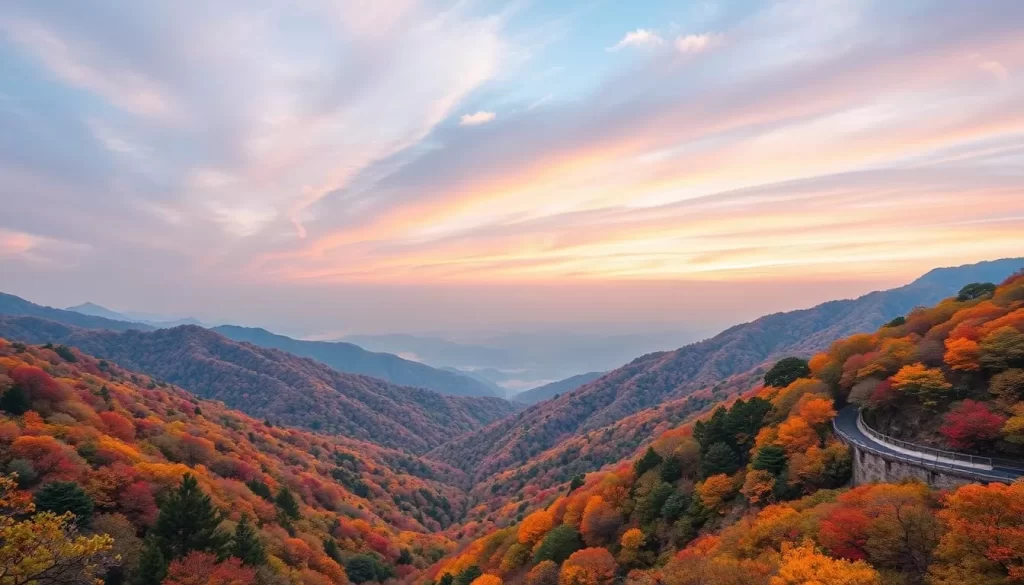
Naejangsan National Park transforms into one of Korea’s most spectacular autumn destinations when its dense forests of maple trees turn brilliant shades of red and gold, typically reaching peak color in late October to early November.
You can take the cable car from the park entrance to enjoy panoramic views of the autumn foliage, or hike along well-maintained trails that lead to scenic viewpoints like Seoraebong Peak and Bulchulbong Peak. The park is also home to Naejangsa Temple, a beautiful Buddhist temple complex dating back to 636 CE, where the autumn colors create a particularly magical atmosphere.
A highlight of any autumn visit is the Maple Road, a 1.5km path lined with ancient maple trees that create a natural tunnel of red and gold leaves, making it one of the most photographed spots in all of Korea during fall.
Where to Stay in North Jeolla Province
Accommodation in North Jeolla Province is as varied as its landscapes and cultural experiences. Whether you’re looking for a traditional stay or modern comforts, the province offers a range of options to suit your travel needs.
Traditional Hanok Accommodations
For a truly immersive experience, consider staying in a traditional hanok. Jeonju, in particular, is renowned for its hanok village, where you can live among beautifully preserved traditional Korean houses. A Jeonju hanok stay experience allows you to step back in time and enjoy the simplicity and elegance of Korean culture.
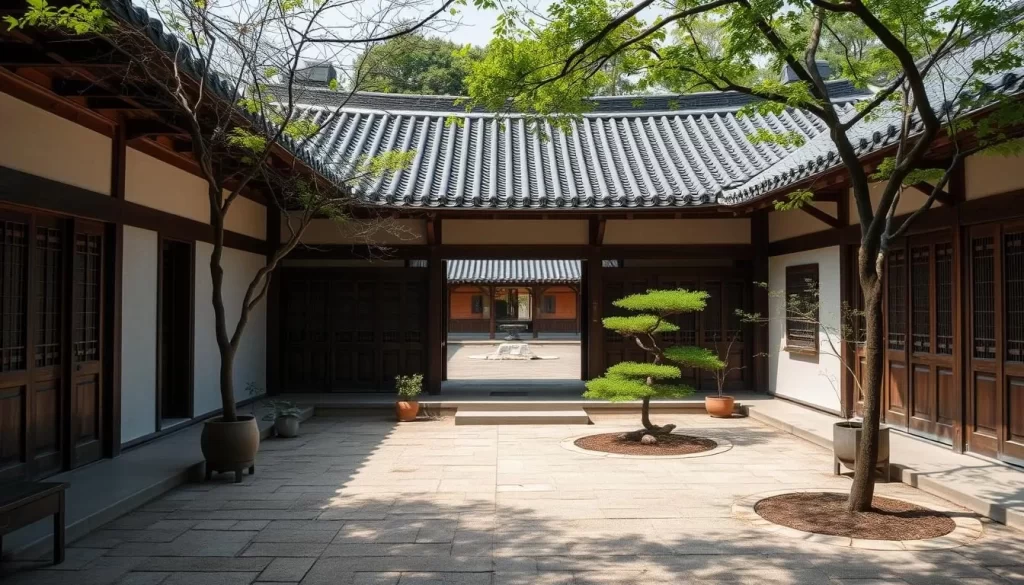
These accommodations not only provide a unique insight into traditional Korean living but also offer a tranquil retreat from the bustling city.
Modern Hotels and Resorts
If you prefer modern comforts, Jeonju and other parts of North Jeolla Province have a variety of hotels and resorts. For instance, the Ramada Jeonju and Hotel Leo offer Western-style amenities while being close to the city’s cultural attractions. When planning your trip, consider staying in the city for easy access to transportation and a wide range of dining options.
In smaller cities and near natural attractions like Deogyusan National Park, you’ll find business hotels and modern resort complexes that cater to different needs, offering amenities such as hot springs and multiple dining options. These are ideal for longer stays, giving you time to explore the region thoroughly.
For budget-conscious travelers, the province’s many “yeogwan” (Korean inns) and motels offer surprisingly comfortable and clean rooms at affordable prices. Basing yourself in Jeonju allows for convenient day trips to other destinations in North Jeolla, making your travel plans efficient and enjoyable.
North Jeolla Province: Best Things to Do – Top Picks for Every Season
Whether you’re visiting in spring, summer, autumn, or winter, North Jeolla Province promises an unforgettable experience. The region’s diverse climate and geography make it an ideal destination for travelers seeking varied experiences throughout the year.
Spring and Summer Activities
During the spring and summer months, North Jeolla Province comes alive with vibrant colors and exciting outdoor activities. You can explore the beautiful landscapes of Maisan Provincial Park, hike through Deogyusan National Park, or enjoy traditional Korean cultural experiences in Jeonju.
As the weather warms up, you can also participate in local festivals and events that celebrate the region’s rich heritage and culture.
Fall and Winter Experiences
In the autumn, North Jeolla Province is transformed into a canvas of red, orange, and gold, with the maple and ginkgo trees around Jeonju and in the national parks creating spectacular foliage displays typically peaking in late October to early November. You can experience traditional Korean harvest celebrations, including local festivals where farmers showcase the region’s agricultural bounty.
Winter brings excellent skiing and snowboarding opportunities at Muju Ski Resort in Deogyusan National Park, which operates from December through March with reliable snowfall and modern facilities. The colder months are also perfect for experiencing traditional Korean winter foods in Jeonju, including hearty stews like gamjatang (pork spine soup) and warming rice wines.
| Season | Top Activities |
|---|---|
| Spring/Summer | Hiking, cultural experiences, local festivals |
| Autumn | Foliage viewing, harvest celebrations |
| Winter | Skiing, snowboarding, traditional winter foods |
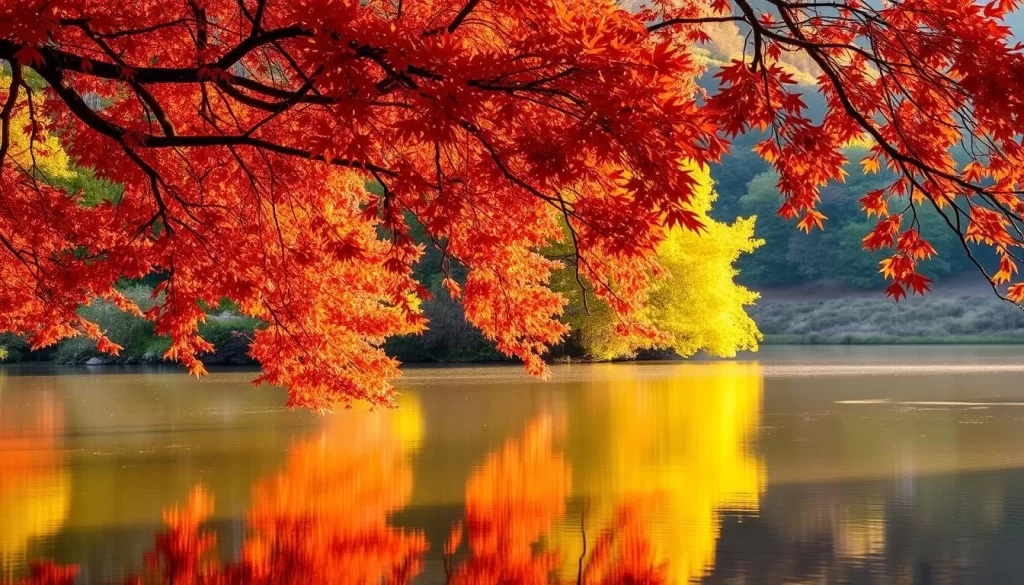
At any time of the year, North Jeolla Province offers a unique and enriching experience, making it a great destination for travelers. With its diverse landscapes, rich culture, and exciting activities, you’re sure to have a memorable trip.
Practical Travel Tips for Visiting North Jeolla Province
As you plan your way to North Jeolla Province, you’ll find that the journey is just as enjoyable as the destination. South Korea’s efficient transportation network makes it easy to reach this hidden gem. You can travel to North Jeolla Province by taking the KTX high-speed train, which is the most convenientwayto reach Jeonju from major cities like Seoul.
The journey takes approximately 1.5-2 hours from Seoul and costs between 27,000-35,000 won for a one-way ticket. Alternatively, you can hop on a bus or take a plane, giving you multiple options for your trip.
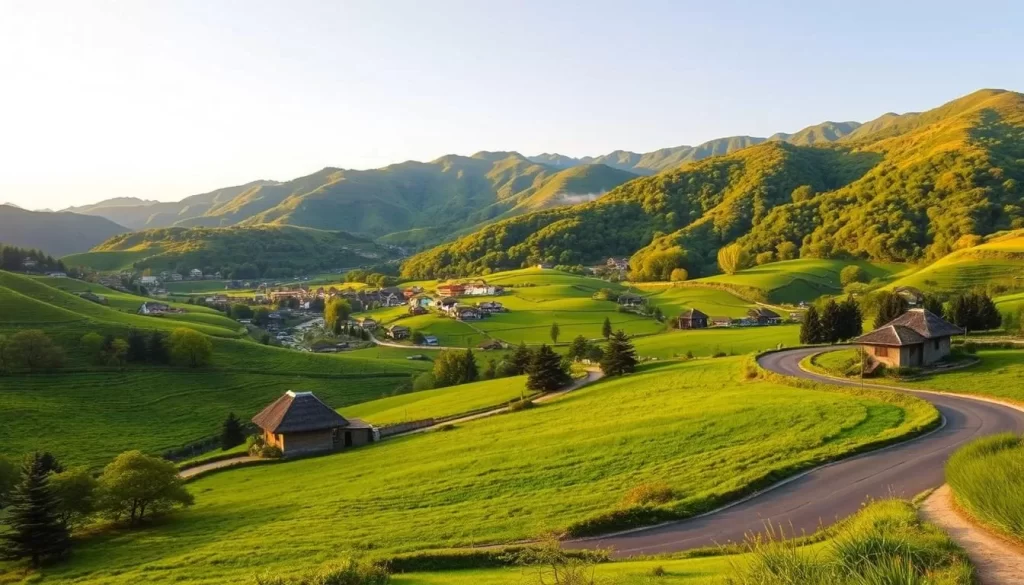
Once you arrive, public transportation within the province is reliable, but consider renting a car to explore remote natural attractions. The best time to visit is during spring (April-May) or autumn (October-November) for pleasant weather and spectacular foliage.
| Mode of Transport | Duration | Cost (won) |
|---|---|---|
| KTX Train | 1.5-2 hours | 27,000-35,000 |
| Bus | varies | varies |
| Plane | 1 hour | varies |
To make the most of your trip, use the T-Money card for convenient travel on public transportation in Jeonju. Visiting popular sites on weekdays will also help you avoid crowds. Additionally, be mindful of local customs when visiting temples and traditional sites.
Conclusion
In North Jeolla Province, you’ll find a part of Korea that remains untouched by modern development, preserving the country’s traditional way of life. This hidden gem offers an authentic glimpse into traditional Korean culture, making it an essential destination for travelers. With its rich history, stunning beauty, and warm hospitality, North Jeolla Province provides a unique experience that showcases the best of South Korea. Visit this province to discover one of Korea’s most treasured parts of the country.
The above is subject to change.
Check back often to TRAVEL.COM for the latest travel tips and deals.
